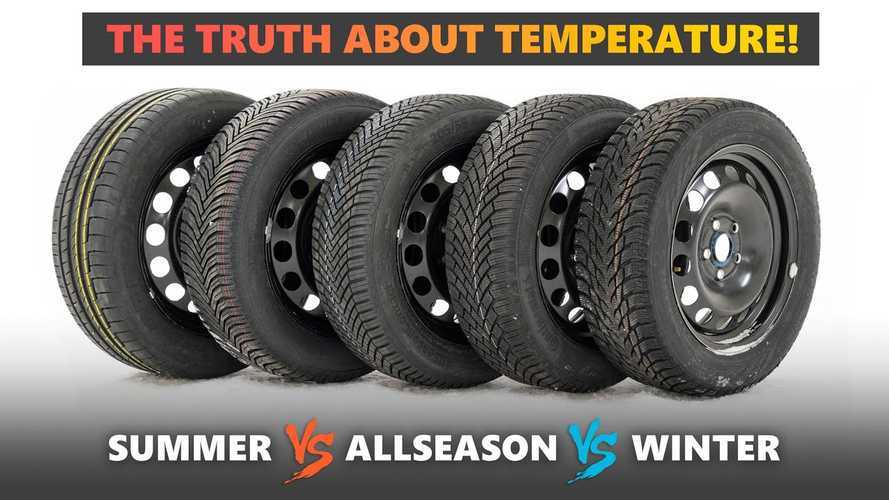When temperatures decrease, tire pressure can drop. It’s reported that with every 10-degree drop in temps, your tire pressure drops 1 pound per square inch (1 PSI).
Yet low tire pressure may require your heavy equipment to use more fuel to get the job done. It can also cause more wear on your tires. So what should tire pressure be in winter?
30 to 35 PSI is generally recommended as the ideal tire pressure for winter temperatures, but the exact recommended pressure varies depending on the type of vehicle and how low the temperature drops.
Ultimately, it’s important to check your vehicle’s owner’s manual and go with the recommended tire pressure provided. Some tires will have ideal PSI listed on the tire sidewalls. Your machine’s recommended tire pressure might also be listed on a sticker inside the driver’s door.
Dropping temperatures might cause a heavy load to need a higher PSI but start with the recommended PSI. Measure the pressure while your tires are cold. Inflate them to that recommended PSI.
Don’t depend on a visual inspection. Use a tire pressure gauge to measure the tire inflation on your heavy equipment to be certain it is sufficient.
The recommended tire pressure for a car is typically between 30 and 35 PSI. For a four-wheel-drive truck, 35 PSI is the norm. Skid steer tire pressure specifications range from 45-60 PSI. Again, check the manufacturer’s manual for optimal tire pressure.
The following table shows variations of tire pressure in cold temperatures:
| Pressure at 68 °F | 30 psi | 40 psi | 60 psi |
| Pressure at 32 °F | 26.9 psi | 36.3 psi | 54.9 psi |
| Pressure at 14 °F | 25.4 psi | 34.4 psi | 52.4 psi |
| Pressure at -4 °F | 23.9 psi | 32.5 psi | 49.8 psi |
Check your equipment’s tire pressure at least weekly during the winter months.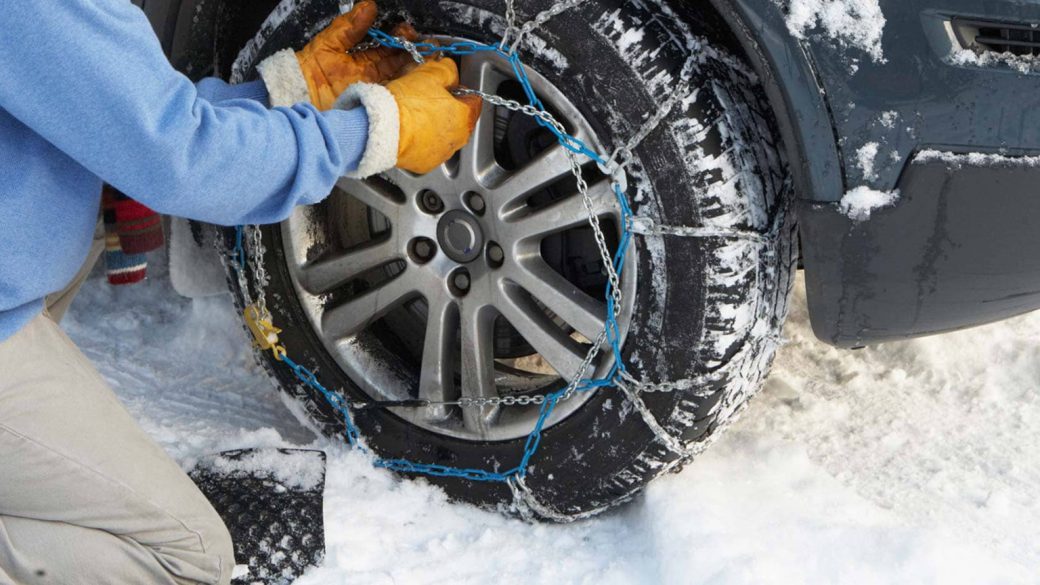 Refer to the manufacturer’s manual for recommendations regarding seasonal changes and optimal tire psi.
Refer to the manufacturer’s manual for recommendations regarding seasonal changes and optimal tire psi.
Exceeding the manufacturer’s recommended tire pressure may impact your equipment’s performance and cause premature wear on its tires.
Pneumatic tires, the most used on skid steers, need to be inflated to the proper pressure to function the way they were designed to perform. If at any time you notice your tires sagging after a dip in temperature, measure the PSI of the tires and fill them to capacity.
Underinflating the tire pressure can cause damaging heat and friction on your tires and can cause rubber-compound failure.
Consider switching the standard tires on wheeled power equipment to snow tires to optimize its performance, especially if you’re using it on pavement or for snow removal.
For best performance and to reduce the risk of damaging your equipment, all tires should be switched (not just two), be the same size and brand, and have the same type of tread.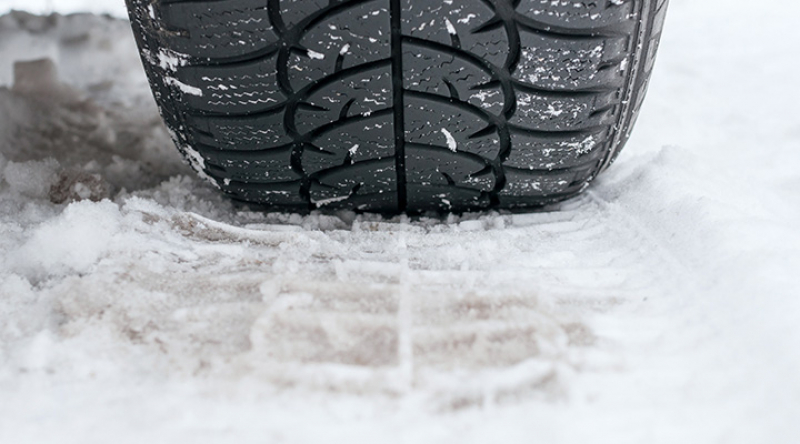
Check the tire pressure on your equipment before you put the machine in operation.
Find a gauge that is designed to measure your type of machinery and adequate PSI range. A gauge with a backlit display will make it easy to check your equipment’s tire pressure at dawn when visibility is low.
Don’t forget to replace the valve caps after checking tire pressure!
Digital gauges are ideal (rather than pen or dial) since they’re easier to use and many come backlit with LED lighting. If you’re starting your shift at dusk, that lighting comes in handy.
There are tire pressure sensor systems available that can be used on different types of heavy-duty vehicles, from F150 trucks to large skid steers. Check the literature that comes with these tool kits to ensure one can be used on your machine and still provide you with sufficient tire pressure data.
Eagle Power & Equipment has factory-trained technicians on staff to help you, as well as access to engineers and the factory.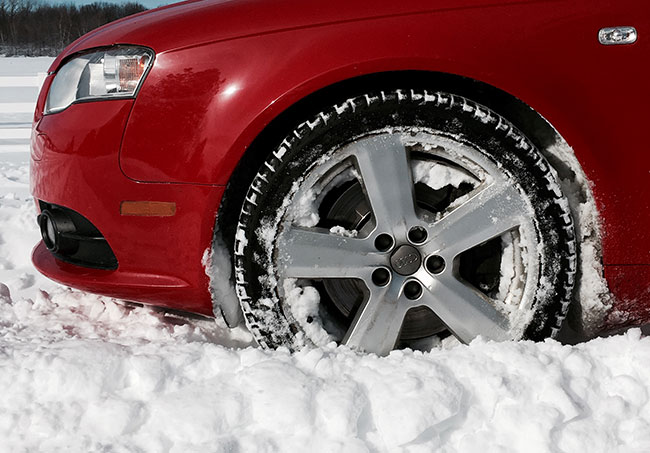 We offer on-site field repair and, specifically, tire repair so we encourage you to stop by or call to learn more about our services and repairs.
We offer on-site field repair and, specifically, tire repair so we encourage you to stop by or call to learn more about our services and repairs.
Posted in Heavy Equipment Safety, News, Skid Steer and tagged heavy equipment, pneumatic tires, power equipment, recommended tire pressure, skid steers, tire pressure on by Eagle Power.
Yes, you typically need to inflate your tires in cold weather. As we'll explain, low temperatures often mean low tire pressure, and low tire pressure could mean dangerous driving conditions.
With the promise of holiday travel up ahead, it’s time to prepare! Firestone Complete Auto Care is here to help you drive safer with a quick lesson on cold weather and tire pressure.
First, a quick science lesson: when the temperature drops, molecules in the air move slower and huddle together. When the temperature increases, molecules move faster and farther away from one another!
When the temperature increases, molecules move faster and farther away from one another!
You can test this concept for yourself. Just set a basketball outside and wait! The ball will slightly deflate in the cold morning air, then re-inflate in the heat of the afternoon.
When this concept plays out inside your tires, it can affect your tire pressure.
That's because tires lose or gain 1-2 PSI (pounds per square inch) for every 10℉ change in temperature. So theoretically, your tires could lose 4 PSI over the weekend if the temperature drops by 20℉!
While your tire pressure should bounce back after the cold spell passes (assuming it does pass and your tires have no leaks or holes), low tire pressure shouldn't be ignored.
Low tire pressure can lead to:
 2% for every 1 PSI drop in the average pressure of all tires, notes the U.S. Department of Energy.
2% for every 1 PSI drop in the average pressure of all tires, notes the U.S. Department of Energy.A small decrease in tire pressure is hard for the naked eye to detect, but it can still have a big impact on your driving. Tires can lose pressure even when temperatures remain constant over the winter. To be safe, we recommend checking tire pressure every other time you visit the pump, and especially when your TPMS light pops on.
Here’s how:
You can find it written in your owner’s manual or on a sticker attached to your door jamb, glove box, or fuel hatch. Recommended tire pressure usually falls between 30-35 PSI for passenger cars. If you’re not sure, try our recommended tire pressure tool.
 Check your tires before driving.
Check your tires before driving.Measure your tire pressure before driving, not after, for the most accurate reading. This practice is referred to as setting the cold tire pressure. If your recommended tire pressure is 32 PSI, that means 32 PSI before you put rubber to the road and the tires heat up.
Tire pressure gauges can be purchased for a few dollars at most big box retailers. "Pencil" style gauges are cheapest and have a little stick that pops out with the tire pressure reading. Digital tire pressure gauges are a bit more expensive but are extremely easy to use.
This is the little black, blue, green or silver screw-cap on your wheel's valve stem. It should be plainly visible from the outside of your car.
Follow the instructions that come with your tire pressure gauge. If there's a hissing sound when you insert the gauge, it may not be properly seated on the valve stem. Re-adjust the angle of the gauge until the hissing stops. What's your tire pressure? Do your tires need to be inflated?
Re-adjust the angle of the gauge until the hissing stops. What's your tire pressure? Do your tires need to be inflated?
Repeat the process for each tire and note your tire pressure readings.
There's a good chance you'll need to inflate your tires in winter at least once. If your tire pressure is low, find your nearest air pump. Add air until you reach your recommended tire pressure, or visit your nearest Firestone Complete Auto Care and we'll inflate your tires for you.
If you need help with any of these steps, please don't hesitate to stop by a local Firestone Complete Auto Care. Summer or winter, sunshine or snow—our knowledgeable technicians will check the health of your tires, inflate them to the recommended pressure, and guide you in buying new tires if yours show an alarming degree of wear.
Vladimir Gavrilov
Estimated reading time: 4 minutes
8241
Category: Service Auto
Studs in winter tires significantly improve the car's behavior on icy roads. 8-9 always work in the contact patchmetal teeth that bite into the ice and prevent slipping. On hard surfaces, the studs can hide in their sockets, allowing the studded rubber tread to provide traction. Fine cutting of lomels envelops the surface of the road and seems to stick to it. In this case, the spikes stop working, and the grip properties of the wheel are determined by the characteristics of the tread and the composition of the rubber compound.
8-9 always work in the contact patchmetal teeth that bite into the ice and prevent slipping. On hard surfaces, the studs can hide in their sockets, allowing the studded rubber tread to provide traction. Fine cutting of lomels envelops the surface of the road and seems to stick to it. In this case, the spikes stop working, and the grip properties of the wheel are determined by the characteristics of the tread and the composition of the rubber compound.
There is no clear indication in domestic legislation about how many studs a tire should have. The rules of the road also do not contain any requirements for the number of spikes. Only in a few European countries have regulations been approved that studs cannot contain more than 50 studs per linear meter of tire in order to avoid high wear on the surface layer of asphalt roads. That's about 100 studs on one R16 wheel. Meanwhile, in Russia there are no such strict restrictions, and tires for icy roads with 120, 180 and even 190 spikes.
The lower limit of studding is also not specified in the regulations. Only in the list of malfunctions and in the technical regulations of the Customs Union is the requirement for the tread height of a winter tire indicated. It must be at least 4 mm. However, manufacturers have standards for studs, and, guided by them, one can evaluate the ability of the wheel to provide the declared driving characteristics.
Typically, a new tire will lose no more than 5% of its metal teeth in its first year of use. And this means that the weakening of adhesion to the icy road will be observed in negligibly small periods of time. It does not affect the driving characteristics.
In the second season of operation, frequent trips on asphalt in the thaw lead to the loss of the same number of spikes, namely 5-10 pieces. The wheel is already losing 10% of the teeth, which is why loss of grip in the contact patch will be observed more often. However, 90% of the spikes are enough to provide the characteristics declared by the manufacturer.
However, 90% of the spikes are enough to provide the characteristics declared by the manufacturer.
After the third season, the tire is missing about 20% of the teeth, and after the fourth year it is already 30-40%. The fourth year of operation of spikes is considered critical. The rubber compound under the influence of road chemicals and due to solar radiation loses its elasticity, and the spikes fall out rapidly. The car already holds the road worse, since a pair of teeth is almost always missing in the contact patch. Although in everyday operation, changes in the behavior of the machine are almost imperceptible and can only be recorded by instruments at specialized sites.
After the fifth year of use, a tire may lose more than 50% of its studs. Such a wheel in the contact patch has a constant shortage of teeth. Instead of 8-9 pieces, only 4-5 spikes work, which is why the coupling properties are noticeably reduced. The braking distance is growing, drivers have to take this into account and not to speed up, as before.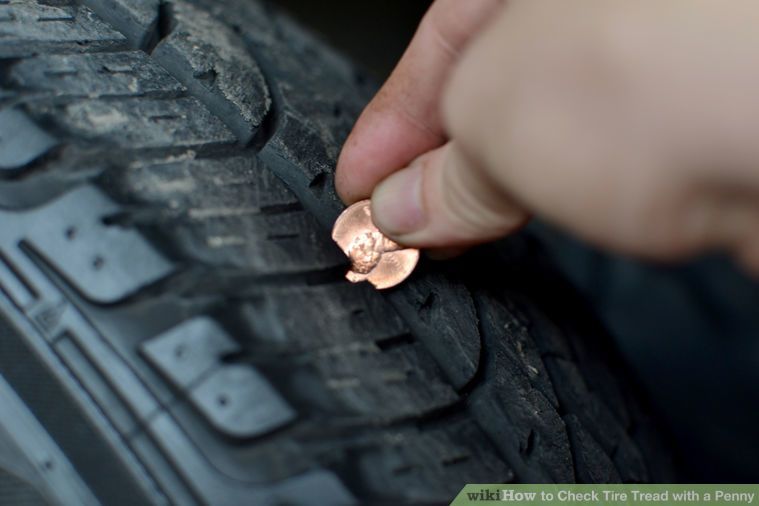 However, you can ride on such a tire.
However, you can ride on such a tire.
After the sixth year of operation, a good imported studded tire may lose 60-70% of the metal teeth, due to which there are noticeable dips in its performance. If earlier she clung to the ice well, now she does it with laziness, allowing large slippage during braking. Nothing critical though. According to their characteristics, studs are close to ordinary Velcro and may well be used in winter, however, not as actively as before.
Manufacturers define the life of any wheel as 7 seasons. Therefore, after the seventh winter, when about 30-40% of the spikes remain on the spike, it is necessary to change it to a new one. By that time, the tread wears out to 4 mm, and it is already forbidden to operate such a wheel by traffic rules.
winter tirescar maintenance
Next article
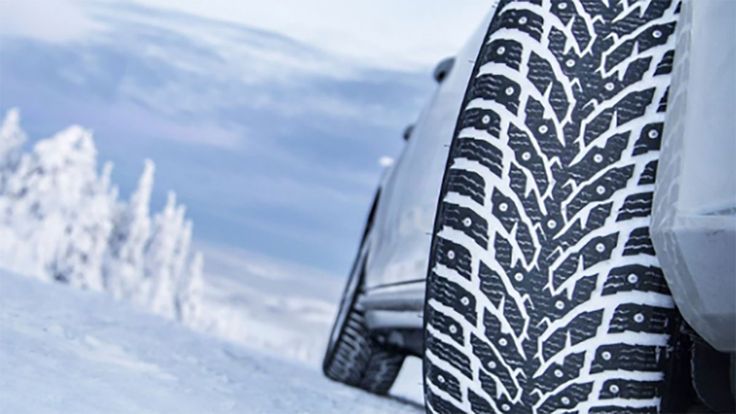 How are tires different?
How are tires different? Media news2
Vladimir Gavrilov
Estimated reading time: 5 minutes
30498
Category: Driving technique
The spring sun melts the snow on intercity roads. Many motorists in a good mood accelerate their cars to high speeds. However, they forget that winter tires are inferior to summer tires in terms of speed.
When developing different models of cars, engineers select tires for them so that they meet the declared characteristics of the car in terms of stability and handling. Almost always, these are summer tires that work well up to a temperature of +7 degrees and lose their properties in the cold. Winter tires always lose to summer tires in all respects and cannot provide passport dynamic characteristics of the car. So that drivers do not forget about this, in Germany winter wheels are accompanied by stickers indicating the permissible permitted speed. These labels must be glued on the central panel so as not to inadvertently go to prohibitive travel modes.
In Russia, in winter and summer, the maximum speed on the country's highways is limited to 90 km/h or, on toll highways, to 110 km/h. In rare cases, there are paid sections with a permitted speed of 130 km / h. Therefore, reminders of the high-speed mode, as it were, are not needed. However, few drivers remain true to the rules. Therefore, before accelerating, it is necessary to carefully study the wheels.
“Every tire has a speed index. It is imprinted on the sidewalls in the form of a letter designation and is adjacent to the load index, says tire expert Alexey Zayakin . - Winter wheels have them smaller. The manufacturer guarantees that the characteristics of the tire will be maintained only within the limits of the speed set by him. If you exceed the threshold, then there is a great chance of an increase in unregulated loads and subsequent destruction of the tire.
The letters A, B, C, D, E, F, G, J are used on wheels for special equipment, but for passenger cars, tires with a speed index of over 120 km / h are made.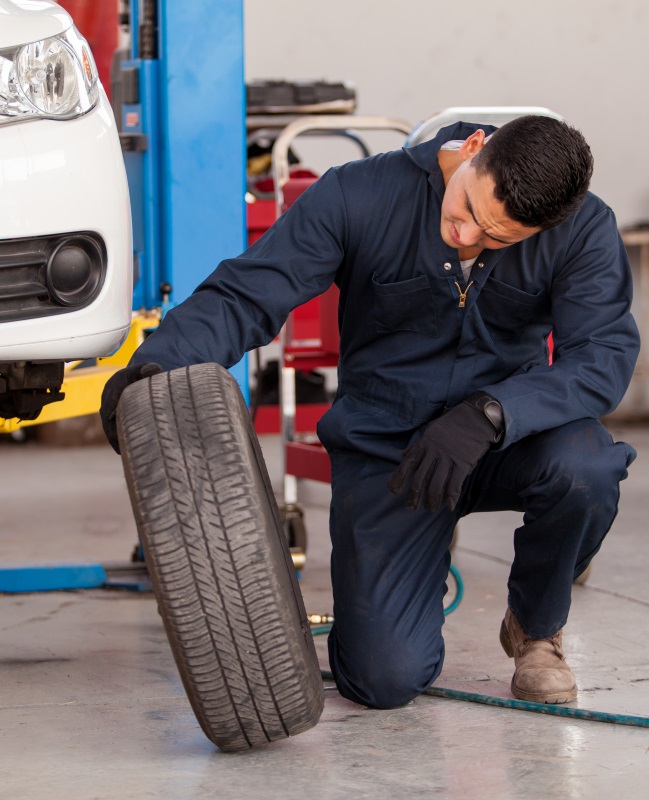 This is much less than the engine can accelerate. For example, if a car has specific high-profile N tires and it accelerates to 200 km / h on dry pavement, then there is a great chance to end up in a roadside forest, since the tires simply will not hold the car when turning.
This is much less than the engine can accelerate. For example, if a car has specific high-profile N tires and it accelerates to 200 km / h on dry pavement, then there is a great chance to end up in a roadside forest, since the tires simply will not hold the car when turning.
A simple dependency needs to be remembered. The softer the wheel, the higher its speed characteristics, but the lower the service life. Therefore, high-speed wheels almost always wear out quickly.
As the speed increases, the load on the rubber increases and wear increases. “The car first accelerates, which often leads to slight slips on the pavement, and then it slows down just as intensively at high speed,” says Vyacheslav Subbotin, engineer and captain of the GAZ Raid Sport rally team . - Therefore, the durability of tires is affected not only by the maximum speed, but also by the intensity of acceleration and braking. Studded wheels are the most sensitive to them.